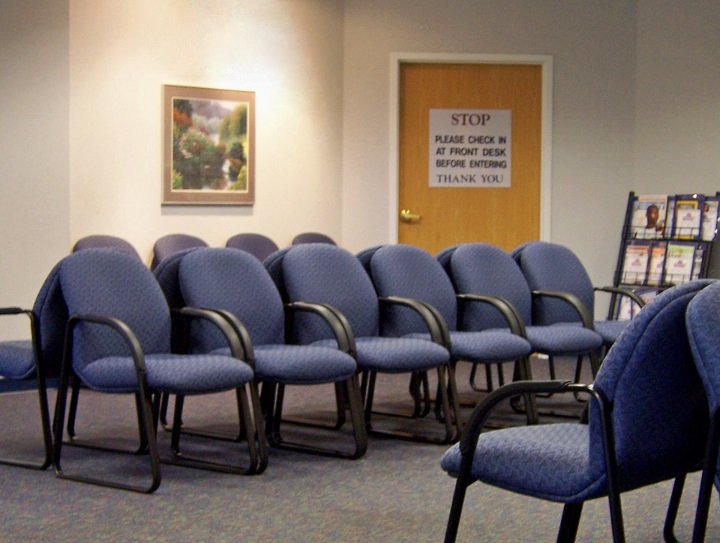 First impressions can be lasting impressions – especially when it comes to your waiting room. Yet, with a bit of thought, a small level of investment and a little effort, a welcoming and relaxing environment that pleases patients, staff and the dreaded inspectors can easily be created. Here are some top tips on how to achieve waiting room success.
First impressions can be lasting impressions – especially when it comes to your waiting room. Yet, with a bit of thought, a small level of investment and a little effort, a welcoming and relaxing environment that pleases patients, staff and the dreaded inspectors can easily be created. Here are some top tips on how to achieve waiting room success.
Looks matter: As already mentioned, first impressions really do count, so think about the appearance of your waiting room. What would make it more appealing and vibrant? Or would you be better with a calming, soothing environment? That might come down to patient demographics.
Opinions count: Don’t make your own mind up – you might be right, but it’s better to canvas other opinions too. Ask your PPG, survey a wide range of patients, ask staff.
Take the weight off: Have a seat! Sit for 5–10 minutes in your own waiting room and consider what might need updating. Look at it from a patient’s perspective and ask yourself what would improve the environment.
Tone up: Colour can make a big difference; both to the overall feel and also to specific patient groups. For example, a dark doormat is a no-no as far as dementia sufferers are concerned as they see it as a hole. Likewise, consider installing chairs in alternating colours, which are easier to distinguish for patients with dementia.
Get up: Continuing the patient specific theme, chairs with arms are easier to get out of – so could be more user-friendly for older patients or those with mobility issues.
The young ones: Then there are the younger members of the patient demographic. Toys are a usual sight in most waiting rooms but remember that they need to be kept clean. CQC guidance on toys says that it’s generally accepted that toys should be kept clean, but on inspection it does not expect to see a specific policy on how this is achieved or how frequently cleaning takes place. Guidance states that a GP practice should follow The Health and Social Care Act 2008 Code of Practice on the prevention and control of infections and related guidance when considering infection control and cleanliness arrangements.
Keep it clean: Talking of infection control, it’s important to have an infection control and cleaning policy. Inspectors will more than likely ask to see it. What materials are you using? Could hard floors be better than carpet? What about wipe-clean vinyl seating? On a similar topic do you have a policy in place to protect against the spread of exceptional diseases? What about controlling a flu pandemic?
Light it up: Can lighting improve the practice environment? Are all areas well lit? Can patients see noticeboards clearly enough?
Entertain: Could music help to relax people (don’t forget the relevant music licence)? Poetry is reported to help patients relax too. Then there are the magazines. Patients don’t want to read a dog-eared three-year-old gossip magazine, so try to keep things as up-to-date as possible. A handy hint from a practice manager – grab a couple of free copies of the local supermarket’s food magazine – it always goes down well apparently.
Artwork: Another way to distract people is to hang works of art on the walls. Could a local art club help with this? The CQC says it is OK to display artwork but it does issue some guidance – click here for more details.
Keep the noise down: While waiting rooms needn’t be silent, nor should they be noisy places. So, make sure staff conversations from reception areas can’t be heard – you wouldn’t want patients hearing you anyway – so consider moving offices or building sound-deadening walls. Think about rearranging seating to perhaps provide quieter areas.
Give notice: Keep a keen eye on noticeboards and liaise with patients about what they think is needed. We’ve covered this topic in-depth in a previous Practice Index Blog.
Stay timely: It’s all well and good having folders of information for reference, but when they’re marked with a year that’s long gone, it can make the patient question what else is out of date! Try to refresh all resources and posted information regularly.
TV Times: Many waiting rooms have TVs, but what do you have on? Do you just have the rolling news channels on all day or do you think about using them as patient information portals?
The above is just a quick overview of what you can do to make your waiting room environment more welcoming. Of course, for patients the ultimate is a ‘no wait’ waiting room – but that’s unlikely to be possible for many practices. Therefore, getting your waiting room right is an important task.
How have you improved your waiting room? What tips can you share with other practice managers? We would love to hear from you, either in the comment box below or in the forum here.
——————–
Trending topics in the forum:
Need talking down…
Practice Index PLUS
Receptionists taking obs for GPs
Interview: Staff long term sickness





0 Comments